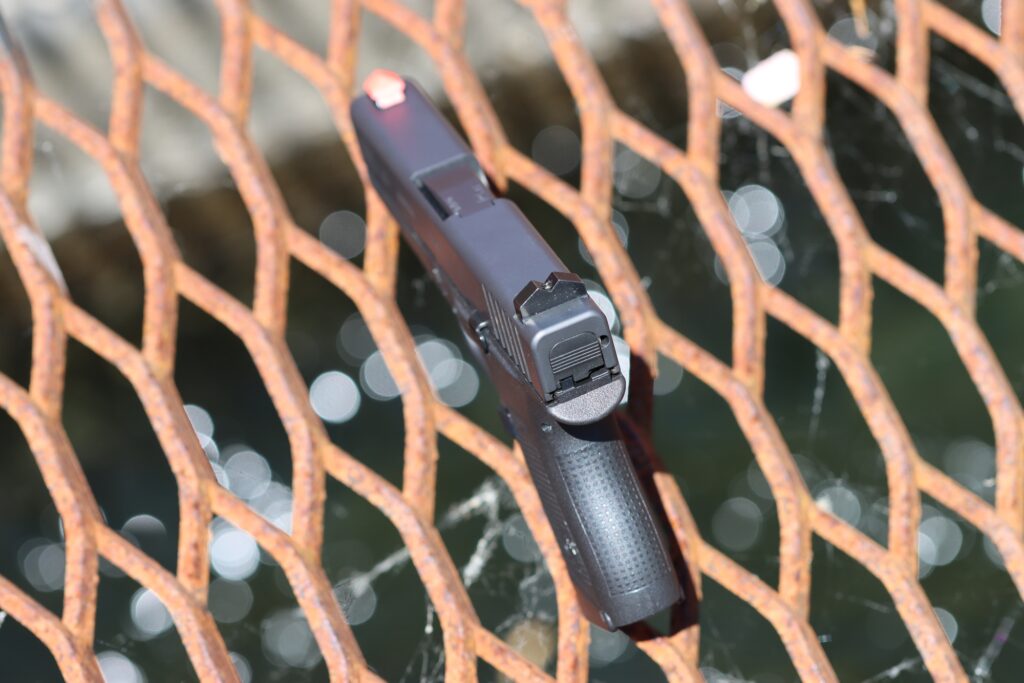Troubleshooting The Most Common Problems With Your Iron Sights
Introduction
Iron sights are reliable and time-tested aiming devices, but like any equipment, they can experience issues that affect your shooting accuracy. Being able to troubleshoot and resolve these problems is essential for any shooter. In this comprehensive guide, we will walk you through the process of troubleshooting common problems with iron sights, providing step-by-step instructions and expert tips to keep your iron sights performing flawlessly. The OuterImpact Pyramid and Dark Diamond Sights are the pinnacle of speed, acquisition and preference.

Why Troubleshoot Your Iron Sights?
Before we dive into troubleshooting, let’s understand why it’s crucial:
- Accuracy: Identifying and fixing issues ensures your iron sights are on target, resulting in precise shooting.
- Reliability: Reliable iron sights are essential for self-defense and competitive shooting, where every shot counts.
- Confidence: A shooter with well-tuned iron sights can confidently engage targets at various distances and conditions.
Now, let’s get into the step-by-step process:
Step 1: Gather Necessary Tools
Before you start troubleshooting, gather some essential tools:
- Screwdrivers (flathead and Phillips)
- Allen wrenches
- Gunsmithing tools (if necessary)
- Cleaning supplies
- Spare parts (if needed)
Step 2: Ensure Safety
Ensure your firearm is unloaded and the chamber is clear. Follow all firearm safety protocols, and always keep the muzzle pointed in a safe direction.
Step 3: Identify the Problem
Common Iron Sight Issues:
- Sight Misalignment: Your point of aim doesn’t match your point of impact.
- Loose Sights: Iron sights may become loose due to recoil or other factors.
- Front Sight Issues: Problems with the front sight, such as a bent or damaged post.
- Rear Sight Issues: Problems with the rear sight, like a loose or misaligned aperture.
Step 4: Sight Misalignment
Fixing Sight Misalignment:
- Use the appropriate screwdriver or Allen wrench to loosen the screws securing the sights.
- Carefully adjust the sights to align with your point of aim.
- Tighten the screws to secure the sights in their new position.
- Test-fire to confirm alignment.
Step 5: Loose Sights
Fixing Loose Sights:
- Check all screws securing the sights for tightness.
- If any are loose, carefully tighten them to the manufacturer’s specifications.
- Apply a thread locker if needed to prevent future loosening.
Step 6: Front Sight Issues
Fixing Front Sight Issues:
- If the front sight post is damaged or bent, replace it with a new one.
- Ensure the new post is correctly installed and secured.
Step 7: Rear Sight Issues
Fixing Rear Sight Issues:
- Check for any loose parts in the rear sight assembly.
- Tighten any loose screws or components.
- If the rear sight aperture is misaligned, adjust it as needed.
Step 8: Test and Confirm
After addressing the identified problem, test-fire your firearm to ensure the issue has been resolved. Pay close attention to the point of impact and sight alignment.

Conclusion
Troubleshooting common problems with iron sights is a valuable skill for any shooter. With this comprehensive guide, you can confidently identify and resolve issues that may affect your iron sights’ performance. Whether you use iron sights for hunting, sport shooting, or self-defense, knowing how to keep them in optimal condition ensures accuracy and reliability when you need it most.
In our next articles within this series, we will explore more aspects of iron sights and provide further guidance to help you become a skilled marksman. You can find all our previous iron sights articles here.
